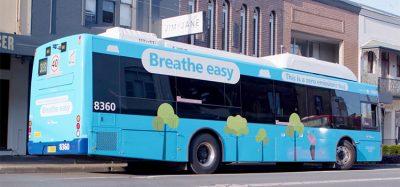TfL launches three new Low Emission Bus Zones to tackle toxic air
- Like
- Digg
- Del
- Tumblr
- VKontakte
- Buffer
- Love This
- Odnoklassniki
- Meneame
- Blogger
- Amazon
- Yahoo Mail
- Gmail
- AOL
- Newsvine
- HackerNews
- Evernote
- MySpace
- Mail.ru
- Viadeo
- Line
- Comments
- Yummly
- SMS
- Viber
- Telegram
- Subscribe
- Skype
- Facebook Messenger
- Kakao
- LiveJournal
- Yammer
- Edgar
- Fintel
- Mix
- Instapaper
- Copy Link
Posted: 24 April 2019 | Intelligent Transport | No comments yet
London’s three new Low Emission Bus Zones will cover 79 different routes across Lewisham, Stratford and Edmonton.


Just two weeks after the launch of the Ultra Low Emission Zone (ULEZ) in central London, the Mayor and TfL have taken further measures to reduce toxic air in the capital’s most polluted areas by introducing three new Low Emission Bus Zones (LEBZ).
The three zones, in Lewisham, Stratford and Edmonton, cover more than 1,330 buses across 79 different bus routes. Only buses that meet the cleanest emission standards operate within the new LEBZs, which have been delivered through a combination of new and retrofitted vehicles. This takes the total number of clean buses introduced as a result of the LEBZ to more than 3,000.
The Mayor has pledged to work towards the entire London bus fleet being made up of zero-emission vehicles. In working towards this goal, TfL has committed to ensuring its entire bus fleet uses the cleanest Euro VI vehicles as a minimum and has already upgraded more than three quarters of its buses to meet or exceed this standard, with all buses due to meet this it by October 2020. This will mean that by 2020 the entire city will become a Low Emission Bus Zone.
London’s bus fleet is already one of the cleanest in the world with all buses operating in central London meeting or exceeding tough new ULEZ emissions standards. London now has one of Europe’s largest zero-emission bus fleet, with 68 new electric double deck buses to be in place by summer 2019. TfL is only buying zero-emission or hybrid double deck buses, as well as retrofitting older buses to reduce NOx emissions by up to 90 per cent. In addition, all new single-deck buses will be zero-emission from 2020. The entire fleet of around 9,000 buses will be zero-emission by 2037 at the latest.
There are now 10 LEBZs across London, reducing NOx emissions from buses by up to 90 per cent along some of the capital’s most polluted roads. In the Putney High Street LEBZ, hourly exceedance of nitrogen dioxide (NO2) has been reduced by up to 99 per cent and annual concentrations by nearly 50 per cent. In Brixton, the LEBZ has reduced hourly exceedance of NO2 by up to 85 per cent and annual concentrations by nearly 20 per cent. With the completion of these three new zones, TfL will reduce toxic air pollution for more than 40 schools, nurseries and academies along the routes and surrounding roads.
The Mayor of London, Sadiq Khan, said: “London is facing an air quality emergency, with pollution from vehicles, including buses, responsible for over half the harmful emissions we breathe. Our existing Low Emission Bus Zones have dramatically reduced pollution and improved the health of thousands of Londoners who live or work along the routes – I’m delighted we can now bring the benefits to Lewisham, Stratford and Edmonton. These zones complement the introduction of the world’s first Ultra Low Emission Zone in central London earlier this month. Experts estimate that without action it would take 193 years to bring London’s air quality to within legal levels – but with the action we’re taking we can hope to achieve this goal in just six years.”
Claire Mann, Director of Bus Operations at TfL, said: “Clean buses play a key role in tackling London’s toxic air and we’re pleased to launch three more Low Emission Bus Zones that will improve air quality along some of the most polluted roads in the capital. We have already seen real improvements to local air quality through the introduction of the previous Low Emission Bus Zones, as well as across London, with more than 75 per cent of our fleet now at Euro VI standard.”
Related topics
Air Quality, Sustainable Urban Transport
Related modes
Bus & Coach
Related cities
London
Related organisations
Transport for London (TfL)
Related people
Claire Mann, Sadiq Khan








